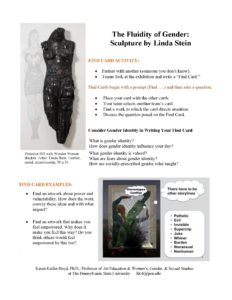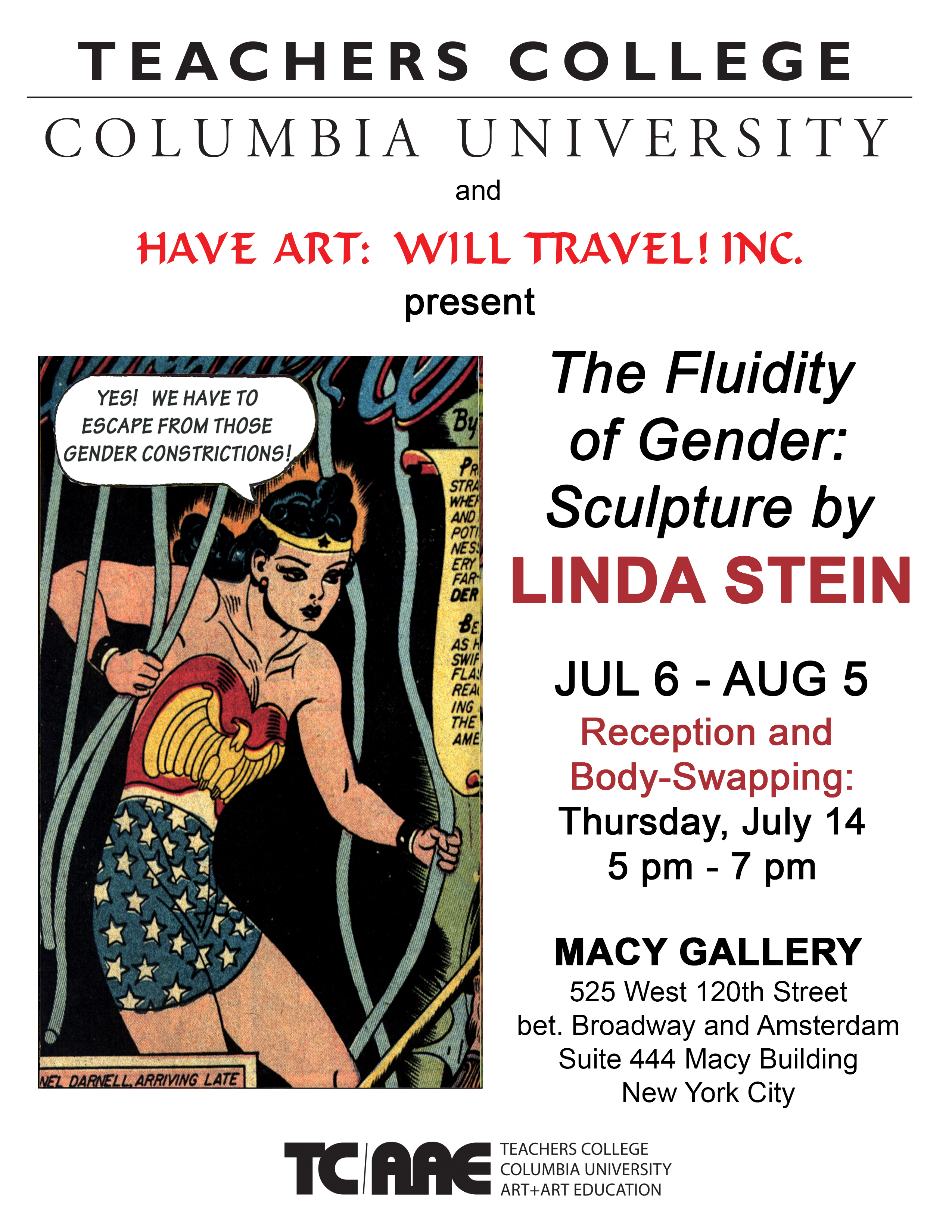ENCOUNTERS WITH THE FLUIDITY OF GENDER: SCULPTURE BY LINDA STEIN
To begin, sit in a circle and ask the participants to write three words that define themselves or how they would like to be known. Follow this prompt with distributing Black Lives Matter ribbons or post-its that they might wear, and ask what matters to them that others should consider for the good of all. What should matter to the society at large?
Next, the facilitator invites participants in the circle to introduce themselves by stating their name, which can be a name that they wish to use for this session, and to let all in the group know their preferred pronoun. I share a story in which one of my sons said to his younger brother that everyone knows the name our parents gave us reflect our parents’ values. In this session, they can name themselves based on their values. Regarding pronouns, provide examples and clarify some terms that will be helpful in discussing the art in the exhibition. [Linked here is an article on the NYC Commission on Human Rights protecting an individual’s right to a preferred name and pronoun.]
Ask that they use a gender identity concept or experience to write a Find Card. Three resources for terminology are linked here: 1 & 2 & 3 global. A Find Card begins with a directive or prompt to find something in an exhibition. The find prompt is followed by a question. Participants visiting the exhibition create the Find Cards rather than the educator.
As facilitator, introduce the process and provide a handout with the process outlined and with examples of Find Cards (see pdf below for example). The facilitator can either join a team and participate, or circulate to hear some of the conversation among each team.
Importantly, during the second half of the Fluidity of Gender workshop, the facilitator leads the full group discussion by asking each team to take the full group to the work they selected, listen closely, affirm the value of their perspectives, contribute information about the art and artist, and raise questions to the full group from what the team brought to attention. Then ask the authors of the Find Card to discuss what work they had in mind in writing their Find Card and why they posed the question that they did.
Resources
Gender Bias Bingo Learning Project
Chimamanda Ngozi Adichie “we need to deconstruct the way we have constructed masculinity” (April 5, 2017).
Keifer-Boyd, K. (2010). Visual culture and gender constructions. The International Journal of Arts Education, 8(1), 1-44 (In English 1-24, & Chinese 25-44] ISSN 1728-175X. Posted online with permission of the IJAE editors.
Kimmel, M. (2015). Why gender equality is good for everyone — men included. [TedTalk, 15:58 min.]
Killerman, S. (2014). Breaking through the Binary: Gender explained using continuums.
SafeZone Project [Activities focused on Intersectionality such as Identity Signs.] Privilege for Sale(+) (Gender ID Focused Ed).
Trans*Form Education is a website created by Kevin Jenkins (2017) that includes reading Lists, resources, videos, and information about Trans Topics & Trans*Affirming Environments.
Trans Ally Resources by Adetty Pérez de Miles and Kevin Jenkins (2017)
How You Can Help to Protect Trans Kids Right Now by Katie Dupere (Feb. 23, 2017)
Schools in Transition: A Guide for Supporting Transgender Students in K-12 Schools (2015)
Teaching Beyond the Gender Binary in the University Classroom by Brielle Harbin (2016)
Trans 101: Gender Diversity Crash Course by Ygender (2017)
Encounters with The Fluidity of Gender: Sculpture by Linda Stein


